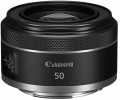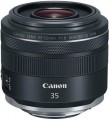Macro photography
Macro photography is the shooting of small objects (for example, flowers, insects, clockwork) from an extremely close distance, sometimes measured in millimetres. In this case, the image of the object occupies a large part of the frame (often almost the entire one), which gives the effect of a significant increase and makes it easy to see details in the picture that are usually almost invisible to the human eye. For such shooting, both lenses specially designed for it and
universal models with the appropriate mode can be used.
Minimum focus distance
Minimum focus distance (m) - the smallest distance from which you can focus on an object and take a photo. Usually it ranges from 20 cm for wide-angle lenses to several metres for telephoto. In the macro mode of the camera or with the help of macro lenses, this distance can be less than 1 centimeter.
Maximum zoom
The degree of magnification of the object being shot when using a
lens for macro shooting (that is, shooting small objects at the maximum possible approximation, when the distance to the subject is measured in millimetres). The degree of magnification in this case means the ratio of the size of the image of the object obtained on the matrix of the camera to the actual size of the object being shot. For example, with an object size of 15 mm and a magnification factor of 0.3, the image of this object on the matrix will have a size of 15x0.3=4.5 mm. With the same matrix size, the larger the magnification factor, the larger the image size of the object on the matrix, the more pixels fall on this object, respectively, the clearer the resulting image, the more details it can convey and the better the lens is suitable for macro photography. It is believed that in order to obtain macro shots of relatively acceptable quality, the magnification factor should be at least 0.25 – 0.3.
Image stabilization
The presence in the lens of its own
image stabilization system. Such a system includes gyroscopes and movable lenses that compensate for small tremors of the lens and prevent the appearance of “shake”. Stabilization is especially relevant when shooting handheld, especially at slow shutter speeds and/or at long distances with high magnification: it is in such conditions that “shake” affects the quality of the image the most. At the same time, it should be taken into account that the presence of a stabilizer significantly affects the weight, dimensions and, above all, the price of optics; at the same time, some modern cameras have their own stabilization systems (due to matrix shift). Therefore, it makes sense to choose a lens with this function in the case when maximum protection against “shake” is of fundamental importance.
Design (elements/groups)
The number of elements (in fact, the number of lenses) included in the design of the lens, as well as the number of groups in which these elements are combined. Usually, the more elements provided in the design, the better the lens handles with distortions (aberrations) when light passes through it. On the other hand, numerous lenses increases the dimensions and weight of the optics, reduces light transmission (for more details, see "Aperture") and also puts forward increased requirements for the quality of processing, which affects the cost of the lens.
Number of diaphragm blades
The number of blades provided in the design of the diaphragm (for details, see "Minimum aperture"). In fact, this parameter is important when shooting scenes with pronounced bokeh (blurred background) and a small depth of field: the more petals the aperture has, the smoother the glare from out-of-focus objects will turn out, while with a small number of petals they can look like polygons. The number of aperture blades has almost no effect on other shooting parameters. Modern lenses have an average of 7-9 petals; the smoothing provided by them in most cases is considered quite sufficient.
Dustproof & waterproof
Lenses with protection against ingress of dust and moisture. "Protected" optics are useful primarily for those who have to shoot a lot outdoors: they are much more resistant to bad weather than ordinary ones, many of these lenses work quietly in the rain, sea spray, etc. However, the specific degree of protection for different models can significantly differ, this point should be specified separately in the official documentation of the manufacturer. Also note that if you intend to constantly shoot in difficult external conditions, not only the lens, but also the camera itself must have dust and water protection.
Filter diameter
Thread diameter for installation on the filter lens. Light filters are devices for changing the parameters of the light flux entering the lens. They can be used for highlighting individual colours, coloring the entire image in one colour, darkening the image, correcting colour temperature and light balance, shooting in the infrared range, etc. Also, a light filter can play the role of protection against pollution. For successful installation on the lens, the diameter of the filter must match the diameter of the filter specified for this model of optics.

